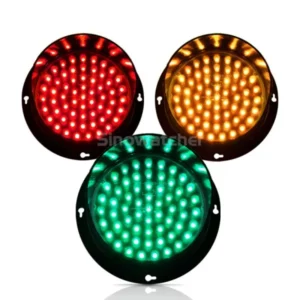As cities expand and vehicle numbers increase—by nearly 3% annually worldwide—traditional stop lights using fixed cycles are no longer effective. They can’t respond to real-time traffic conditions, often causing unnecessary delays or failing to ease congestion during peak hours. Artificial intelligence (AI) offers a smarter solution—by analyzing live traffic data and adjusting signals dynamically, AI-powered stop lights can improve traffic flow, reduce wait times by up to 20-30%, and support safer, more efficient urban mobility.
How AI Improves Stop Light Efficiency

- Massive Real-Time Data Collection
AI-powered stop lights gather data from road sensors, cameras, and connected vehicles, collecting up to millions of data points per day in a typical urban area. This extensive data capture allows the system to have a detailed and current picture of traffic conditions.
- Intelligent Data Processing
Advanced algorithms analyze traffic volume, vehicle speed, and flow patterns in real time. Unlike traditional fixed-timing systems, AI can instantly respond to changing conditions, making traffic signal control much more flexible and accurate.
- Dynamic Signal Timing Adjustments
Based on live traffic data analysis, AI dynamically adjusts the duration of green and red lights to optimize traffic flow in real time. During off-peak times, green light durations are shortened to minimize unnecessary waiting, while during peak hours, green phases may be extended by up to 50%on busy lanes to clear congestion.
- Improved Traffic Flow and Throughput
This real-time adaptability helps smooth traffic flow, reduces congestion, and can increase the throughput of intersections by 15-25%, leading to faster and more efficient movement through busy urban roads.
Key Technologies Behind AI-Driven Stop Lights
Real-Time Data Collection and Analysis
AI systems continuously collect and analyze data such as vehicle counts, average speeds, and pedestrian flow—sometimes every few seconds—to predict upcoming traffic conditions. This allows stop lights to adjust signals proactively, reducing peak-time congestion by an average of 10-15% in pilot studies.
Dynamic Signal Timing
Traditional stop lights operate on fixed-timed cycles that may last 30 to 120 seconds regardless of traffic volume. AI dynamically adjusts these durations based on live conditions, often reducing average vehicle wait times by up to 35% during off-peak hours and improving overall travel speed by 10-20%.
Coordination Across Multiple Intersections
AI synchronizes stop lights across corridors, creating “green waves” that can reduce stops by as much as 40% for through traffic. This coordination lowers travel times on busy routes by up to 15 minutes during rush hours in some smart city implementations.
Prioritizing Road Users
AI systems can detect buses, emergency vehicles, cyclists, and pedestrians, adjusting signals to prioritize their movement. Bus signal priority alone can improve public transit travel times by 10-25%, encouraging more sustainable transport options and reducing car dependency.
Benefits of AI-Powered Stop Lights

- Reduced Traffic Congestion
Cities that have implemented AI-controlled stop lights report congestion reductions of up to 20%. By adapting signal timings in real time, traffic moves more smoothly during peak hours, reducing bottlenecks and vehicle idling. This improvement not only speeds up travel but also lessens driver frustration and road rage incidents.
- Lower Emissions
AI stop lights reduce the time vehicles spend idling at intersections, cutting fuel consumption significantly. Studies estimate that urban areas can see a 10-15%drop in CO2 emissions due to smoother traffic flow. This environmental benefit contributes to cleaner air and helps cities meet sustainability goals.
- Increased Safety
Smarter traffic signals reduce the likelihood of collisions at intersections by 10-20%. AI systems better detect and prioritize pedestrians and cyclists, providing them safer crossing times and minimizing conflict with vehicles. Enhanced safety measures protect vulnerable road users and improve overall traffic discipline.
- Improved Travel Experience
Drivers experience fewer stops and shorter wait times, resulting in commute time improvements averaging around 15%. Reduced stopping and starting also lower vehicle wear and tear, contributing to cost savings for motorists. Overall, AI-controlled stop lights create a more predictable and less stressful travel environment.
Conclusion
AI is transforming stop lights from rigid, outdated systems into smart infrastructure capable of adapting to real-world conditions. By leveraging real-time data, coordinating multiple intersections, and prioritizing diverse road users, AI-powered stop lights offer measurable improvements in congestion reduction, safety, and environmental impact. As cities continue adopting these technologies, traffic efficiency gains of 15-30% could become standard, making urban mobility faster, safer, and cleaner.



